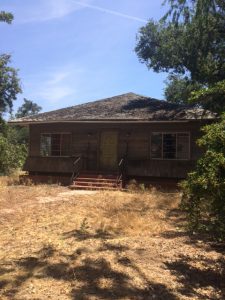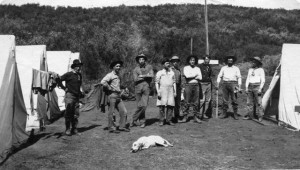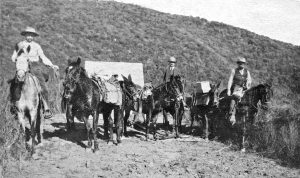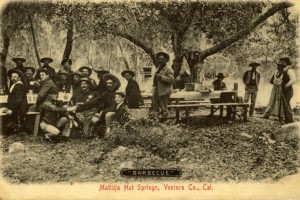The following article first appeared on the front page of the Thursday, November 28, 1957 edition of “THE OJAI”. “THE OJAI” is now the “Ojai Valley News”. It is reprinted here with their permission. The author is unknown.
SEARCH AND RESCUE TEAM ORGANIZATION UNDERWAY
The first steps in organizing an Ojai Search and Rescue Team to aid in searching for persons lost in Ventura County’s wilderness areas were taken Saturday evening by a small group of Valley men experienced in riding and hiking in the back country.
Prompted by the two recent deaths of persons lost in the Ojai area, the group met at the Sarzotti Park scouthouse to formulate the basic plans for an organization trained to cope with all types of search and rescue operations.
Although specifically designated as an independent team, not directly connected with any particular law enforcement or government agency, the unit would be at the disposal of any such agency needing its services.
The team would be divided into mounted (horse) and foot groups with each having a separate experienced and selected “special” unit.
The “general” groups would be open to anyone wishing to participate but would be used only for searches in the immediate Ojai Valley area during daylight hours. No special equipment would be required and it is expected that organizations such as the Boy Scouts, Ojai Trails Association, and Thacher School would join as individual units.
The “special” mounted and foot units will be limited to persons experienced in riding or hiking in the mountains and those with their own equipment for remaining in the back country from one to three days. This membership will also be limited to persons with their own trailering facilities and those who are prepared to leave their employment on short notice for a period of from one to three days.
These “special” units would be called upon for search or rescue operations in isolated areas, regardless of season or time of day or night and must be prepared to reach a base camp with their own transportation.
Neither group would operate as a “posse” or have any blanket law enforcement powers.
In any search and rescue operations in Ventura County’s huge unincorporated regions, the organization would work directly under Capt. Guy Fremlin of the sheriff’s office, who was recently appointed to head all such operations in the county.
Representatives of the Ojai Valley Search and Rescue team met with Capt. Fremlin earlier to work out details of cooperation between his office and the team.
The members of the “special” foot unit will probably be taken from experienced Explorer and Sea Scout groups and supplemented with adult leaders.
It is also hoped that a Scout mobile canteen, capable of feeding up to 300 people, will be made available for use at base camps, and that a separate Red Cross unit can be added later. All members of the “special” units will be urged to take or renew Red Cross first aid training.
The organization also plans to accumulate its own special rescue equipment and already has obtained a “basket-type” stretcher for carrying injured persons out of mountainous areas. Donations may be sought at a later date to help increase the amount of equipment.
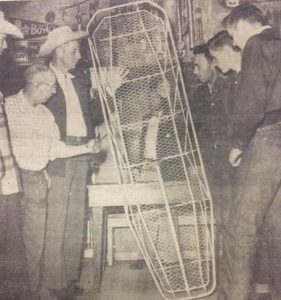
A series of practice drills for the “special” units will probably be held each year with simulated searches into the mountain areas.
Saturday’s organizational meeting resulted in creation of a table of organization for the team in which at least three persons were named to each office so as to guarantee uninterrupted operation should key personnel be unavailable at the time of a search.
Heading the overall operation of the team will be William Bowie, Ado Ruiz, and Bill Klamser, Jr. The mounted groups will be under Jack Huyler, Bud Bower, Gene Meadows and Jesse Kahle and Bowie said that leaders of the foot groups will be announced later.
A telephone system of relaying calls of members was established so that once the initial call from Capt. Fremlin or some other agency reaches the Ojai Police Department, a complete mobilization of the team can be made on short notice.
The team will also make itself available to Ojai area civil defense director James Alcorn, for use in the event of any major disaster in this area.
Application forms along with letters of information about the team will be distributed late this week and may be obtained at the Ojai city Hall or the Ojai Publishing Co. by anyone interested in joining the organization. Further information on the team may be had by phoning any of the three organizational directors listed above.

